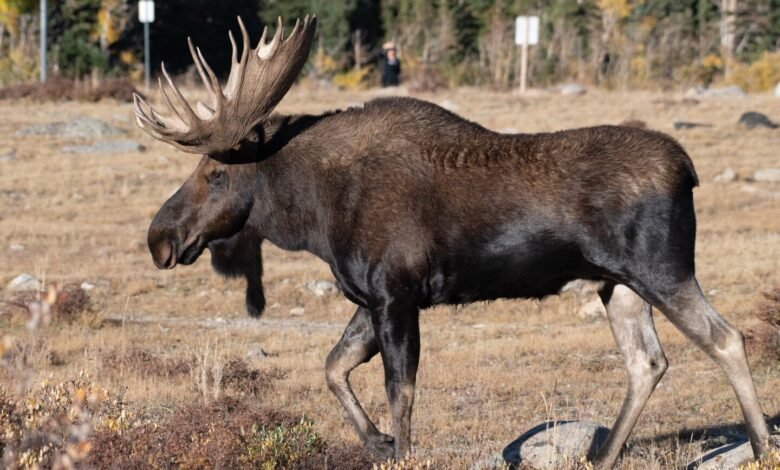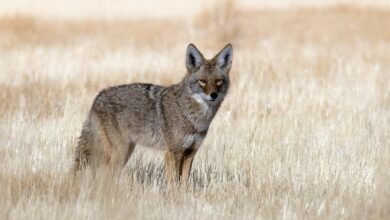What does the public really think about hunting? • Nevada Current

When politicians threaten to eliminate Social Security, it is compared to touching the ‘third rail’, the one that carries electricity to power the locomotive. This admonition suggests great political harm may come to the perpetrator; caution is advised.
Taking a close look at hunting and some of its facts and flaws is seen by some as carrying a similar risk. Idealogues who loudly advocate for hunting and defend it noisily are quick to offer critical comments about those who critique hunting.
Wildlife advocacy groups are often reluctant to state a position on hunting if asked. They may simply say they are not against hunting, leave it at that and hope for the best.
The question
Is ‘hunting’ a ‘thing’, a solitary, stand-alone entity not divisible or is ‘hunting’ a multi-faceted concept worthy of a look and debate?
Hunter advocacy groups have existed for decades. They are well organized and successful in their efforts to convince the non-hunting (often naïve) public that hunting is necessary, an important tradition-even a constitutional right- responsible for saving wildlife species from extinction.
When hunter advocacy groups face a challenge to hunting, their first response is a vigorous claim that the challenger is simply ‘anti-hunting’. Making this unsupported assertion, in their view, eliminates any ‘standing’ for the challenger and negates the need for further discussion.
By and large, this strategy has been moderately successful.
State wildlife management agencies have supported this notion by asserting that hunting enjoys 70-80% support from the public.
The agencies ask the public the following question (or some close version of it):
‘Do you support legal and/or regulated hunting?’
The public response does, indeed, approach 70 percent approval.
Since most of the public is law abiding, it may not be surprising that an activity represented as being legal and regulated receives such approval. The state agency itself may also benefit from a presumption of good will.
If given an opportunity to expand its answer, however, the public has a much more nuanced view of hunting.
A look behind the curtain
Most wildlife management in this country is done by the states, all of which have a state agency in charge of the process.
The federal government has a limited role in wildlife management, such as managing the Endangered Species Act, Migratory Bird Treaty Act, Marine Mammal Protection Act, and a few others.
State wildlife management agencies collectively form the Association of Fish and Wildlife Agencies (AWFA), the national umbrella organization which promotes and protects the interests of its members.
In pursuit of its mission, AWFA closely associates itself with Responsive Management (RM), a survey/research firm that specializes in public relations and attitude survey work related to wildlife management, public attitudes, and other associated concerns.
Some would argue that RM serves as a ‘mouthpiece’ for AWFA, defending hunting, fishing, and trapping practices against all comers.
To its credit, RM does conduct public attitude surveys and asks some hard questions. The most recent survey was conducted in 2023. Let’s take a closer look at the public’s view of hunting.
Public approval regarding the species of wildlife being hunted:
-
- Deer: 70%
- Ducks: 63%
- Elk: 59%
- Black bear: 42%
- Grizzly bear: 39%
- Mountain lion: 37%
- African lion: 17%
- African elephant: 10%
Public approval regarding the reasons for hunting:
-
- To protect humans: 78%
- For conservation of healthy populations: 79%
- For the meat: 74%
- For the sport: 37%
- For the challenge: 32%
- For a trophy: 22%
Public approval regarding the methods of hunting:
- Bow and arrow: 69%
- Firearms: 66%
- Using dogs: 52%
- Using bait: 37%
- Using high-tech assistance: 29%
(The percentages shown above are overall approval ratings, a combination of ‘strongly approve’ and ‘moderately approve.)
Clearly, attempts by state wildlife management agencies to paint ‘hunting’ as a unitary, indivisible, not-to-be-questioned, stand-alone entity, basking in the glow of a 70% approval rating is a fiction.
Is hunting necessary and based on science?
There has never been a scientific study that says hunting is a necessary condition for wildlife to live and prosper on this planet.
Try googling to find clear and convincing scientific evidence that hunting, in the distant past or at present, is a requirement for animal populations to exist in stable equilibrium on the planet.
Generally, what you find are opinion statements from hunter advocacy groups espousing hunting for various self-serving reasons: it creates jobs, hunters are God’s stewards managing animals, it’s a tradition, humans are meat-eaters, and the like.
In today’s world of wildlife management, science resembles more of a numbers game. To do ‘sustainable’ wildlife management; that is to maintain a stable base population while providing sufficient ‘surplus’ animals each year for hunters to ‘harvest’, data collection does occur.
Agencies survey some game species by aerial or other means, collect data from dead animals killed by hunters, sort by age, sex and other measurements, keep track of the newborn of the year, e.g. number of deer fawns per doe.
Wildlife professionals also know biological facts about wildlife species such as breeding season, average litter size, how long cubs stay with their mother, anticipated first-year natural mortality, whether a species is resilient and tolerant of hunting and more.
Many such things are known to the professionals.
The next question is whether and to what degree science, data collection and biology play into the following limited list of questions routinely considered by decision-makers in deciding to hunt an animal?
Can we have a hunt? Should we have a hunt?
Are quotas necessary? What time of the year should hunting be allowed and for how long? Should only males be killed, or can females also be ‘harvested’? Should age limits be observed?
Should hunting be restricted to daylight hours only or allowed around the clock? Can spotlights be used or night vision goggles?
Should dogs be allowed to chase and contain the animal to await the hunter? How about baited traps?
Can trail cameras at water holes be used to identify the biggest deer or elk in the area to offer to a client from out of state who will hire the guide to bring him to the big kill?
How about using drones to quickly scan an area looking for the biggest bucks? Should ATVs be allowed everywhere to facilitate hunter access otherwise difficult to do on foot?
Should laser gun sights and thermal (night) imaging scopes be legal without limitations?
These and many, many similar, highly subjective questions and their answers are what makes up wildlife management today.
Can you see a way for data collection and biological facts to answer these kinds of questions fully?
Or is it painfully clear that personal value judgements – opinions if you will – are the final common pathway to many of these decisions.
While scientific data may play a part in the process, science simply has no answers for many of the questions that wildlife commissions consider in whether to hunt a species and under what conditions it will occur.
Nevada has a moose hunt. Who knew?
In March 2024, Nevada got its first-ever moose hunt.
Over the past half-dozen years, a few moose have drifted into the state from the north, mostly ending up in N.E. Nevada. According to the Nevada Department of Wildlife (NDOW) there are just over 100 animals in total.
Even though male/female numbers may be similar, NDOW suggests there should be a male/female imbalance.
Since moose are not monogamous, fewer bull moose are needed to assure sufficient insemination of available cows. More bull moose than necessary may exert excessive pressure on the cows in pursuit of a breeding opportunity.
So goes NDOW’s theory.
What better opportunity, then, to have Nevada’s first bull moose hunt – ‘harvesting’ a few bull moose for the benefit of the cows in our tiny moose population!
There are 11 states in the lower 48 that allow moose hunting. Of those states, Maine has the largest moose population with about 60,000 animals. Utah and Montana have moose populations above 2000 animals.
Until Nevada stepped into the picture, North Dakota had the distinction of having the smallest moose population with 500 animals. Now Nevada occupies that spot with our estimated 100 animals.
Actually, though, our moose hunt may involve no more than 50 animals since only males will be pursued for the kill.
Even if you’re not familiar with the trappings of science: things like the Null Hypothesis, double blind studies, statistical significance, importance of sample size, random versus non-random data, modeling assumptions and the like, does our tiny boutique moose hunt sound like a well-reasoned, scientifically based decision?
Could it be that science has little if anything to do with it, maybe nothing more than ‘hunter opportunity’?
What is ‘hunter opportunity’ you ask? The ‘thrill of the kill’ trumps the intrinsic value of the victim’s life.
Could there be a non-scientific motive for the hunt, perhaps something more disquieting?
KRNV Channel 4, the Reno NBC outlet, carried a story shortly before the moose hunt was established. The story ended with an NDOW wildlife biologist having the final word.
The applications will cost $10. The tags will cost $120 for Nevada residents and $1,200 for non-residents.
“Whether we get 7,000 to 8,000 applications, that’s going to equate to about $70,000 or $80,000 for the department, maybe enough to buy a pickup truck.”
You decide.





